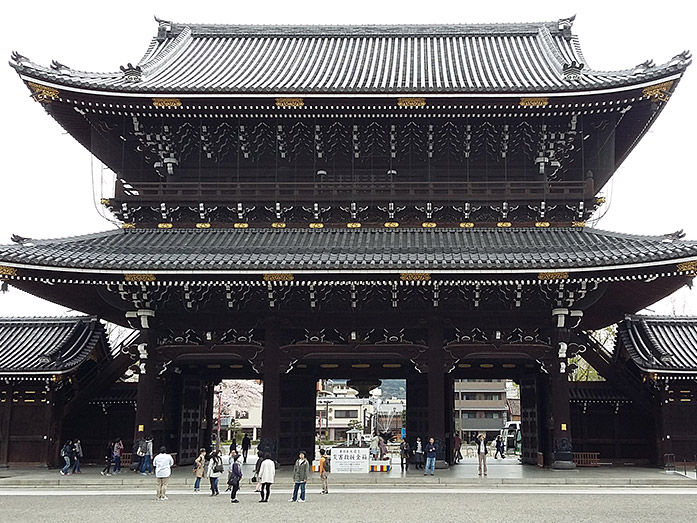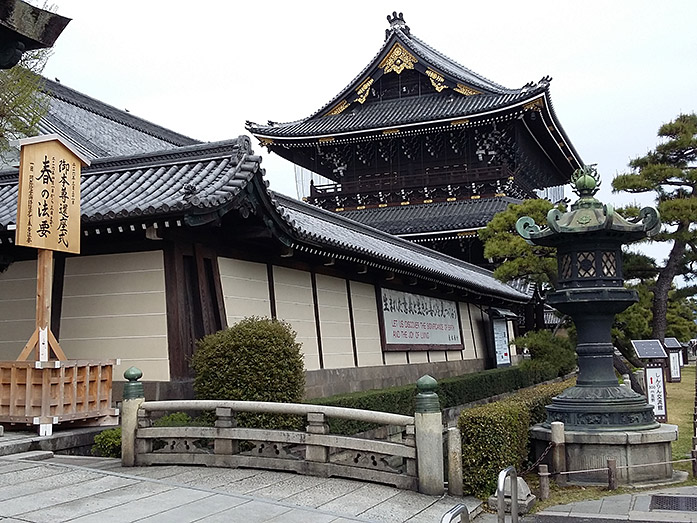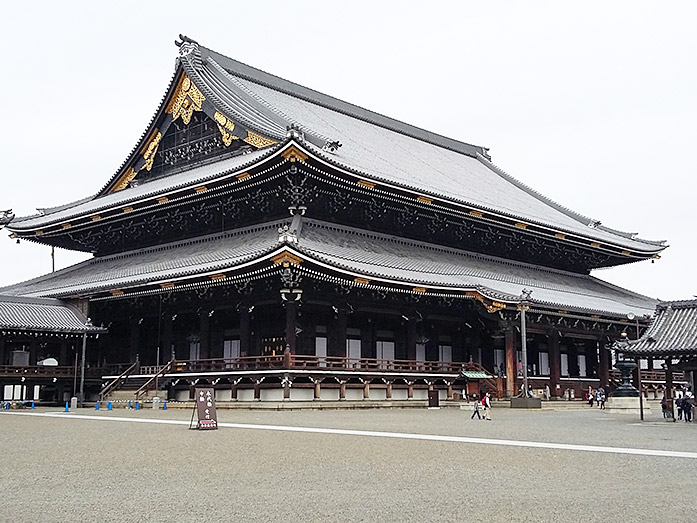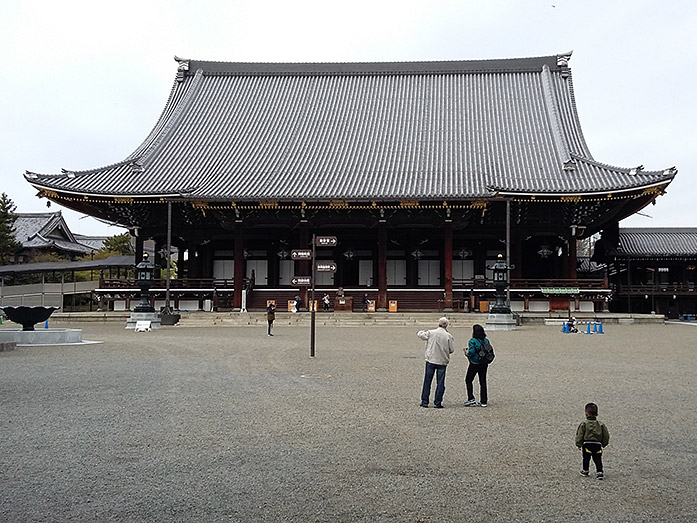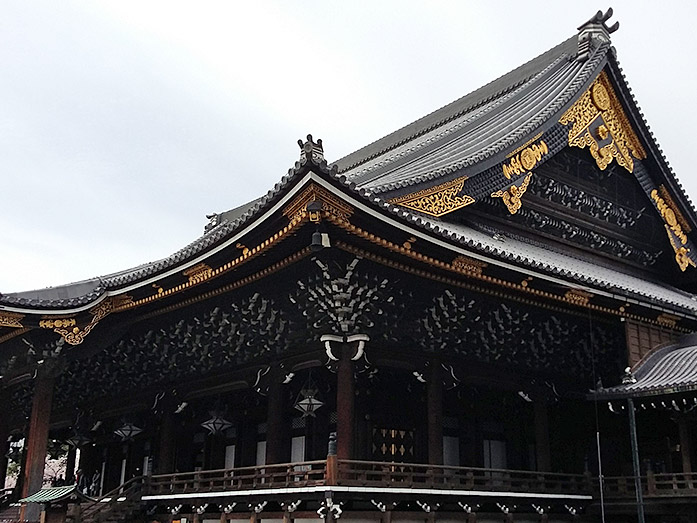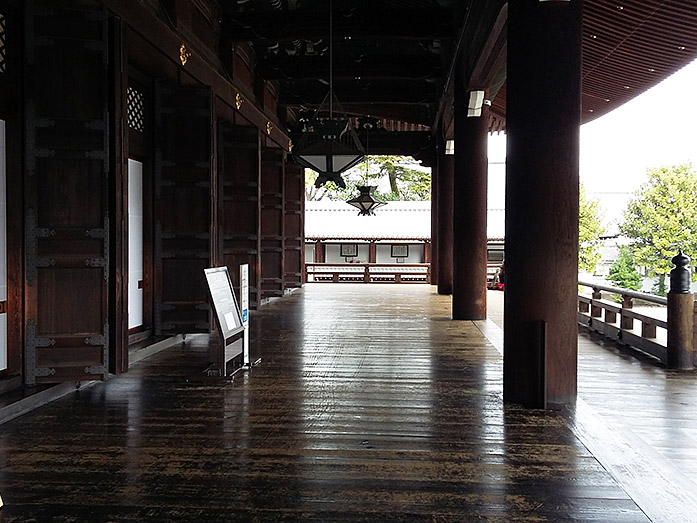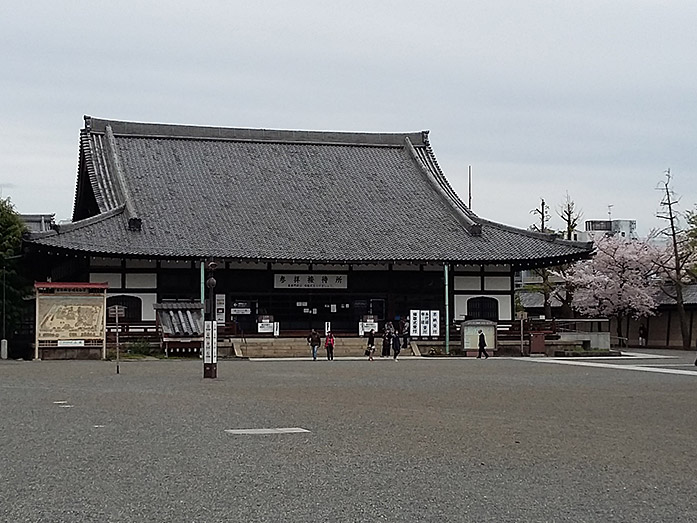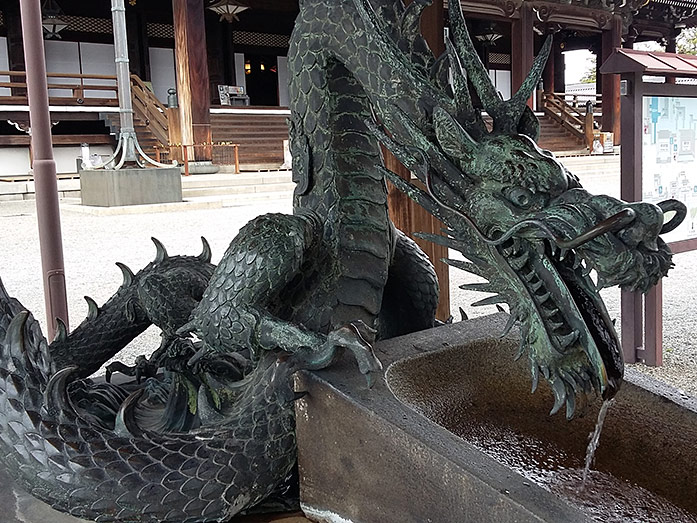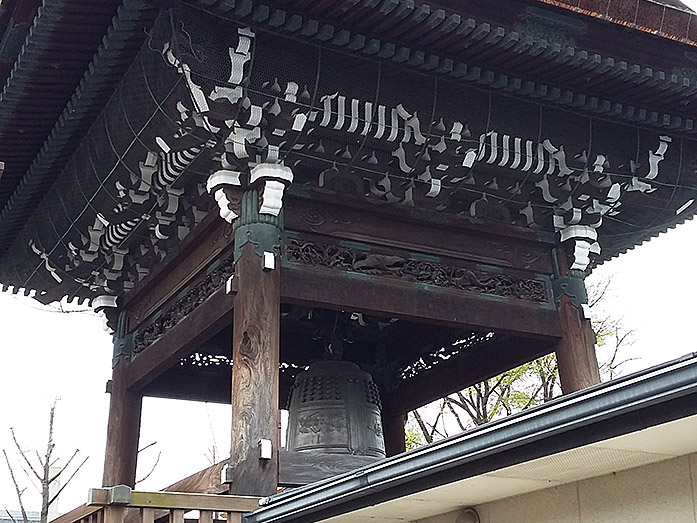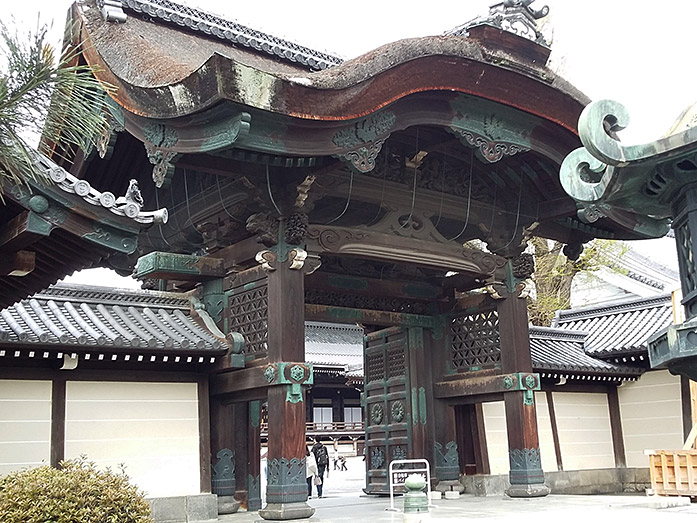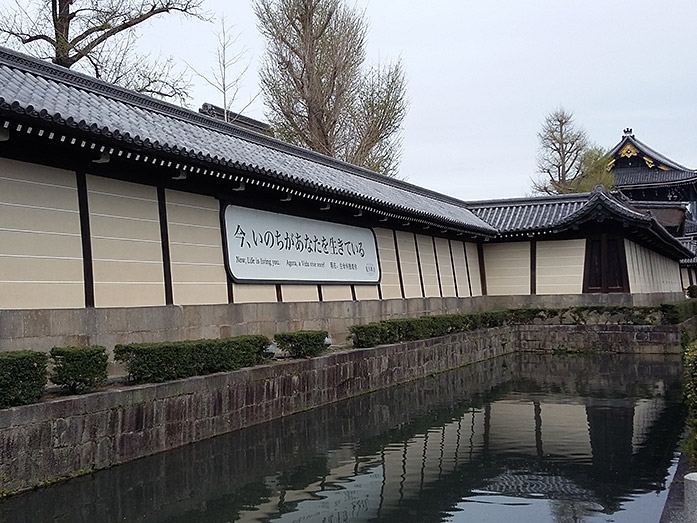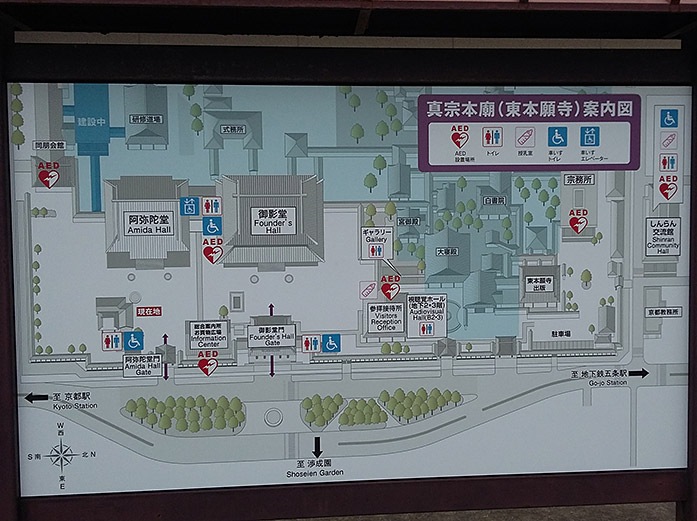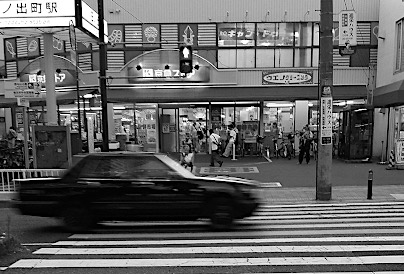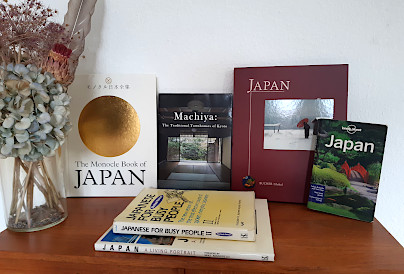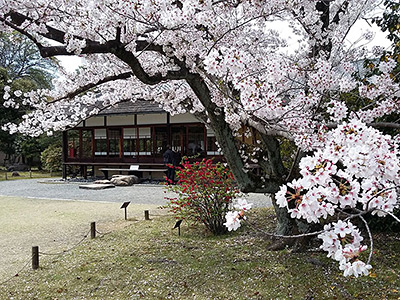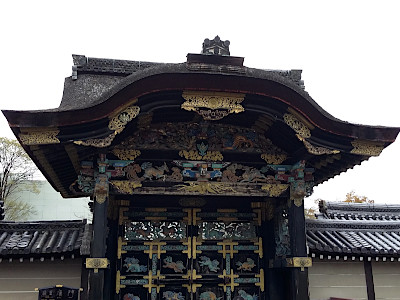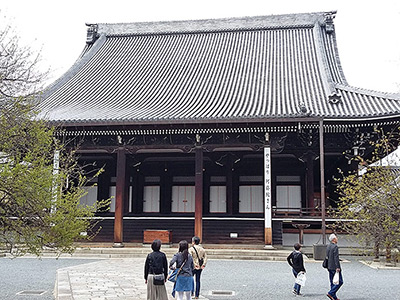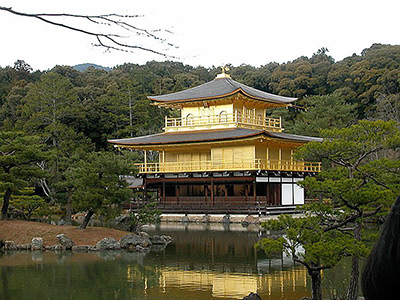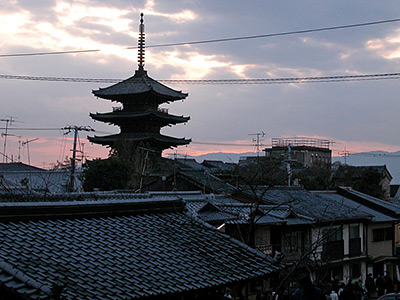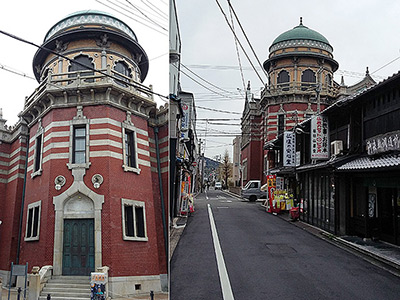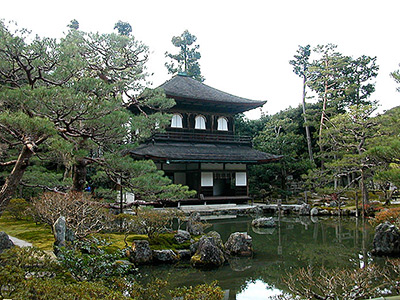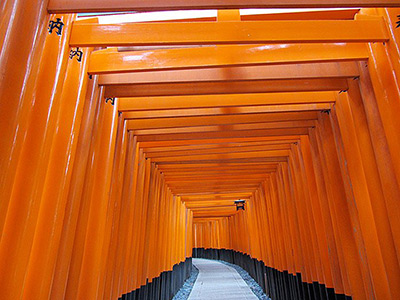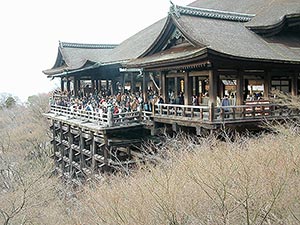Higashi Honganji Temple in Kyoto
This post can contain affiliate links, which means that we may receive a small commission if you make a purchase using these links.
Facts & Figures
Higashi Honganji (Eastern Temple) is the head temple of Shinshu Otani-ha, a branch of Pure Land Buddhism, called Shinshu Hombyo. Higashi Honganji is one of two temple complexes of Jodo Shinshu. The other one nearby is Nishi Honganji. The temple ground is separated into 2 parts and covers an area of 93140 square meters.
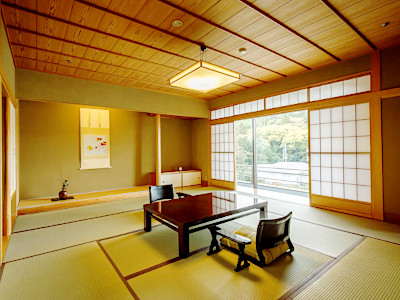 Explore Ryokans in Kyoto >
Explore Ryokans in Kyoto >
Ryokans are the perfect way to discover old Japanese culture and traditions.
The first part includes Amida Hall and Founder's Hall, while the second part includes several pavilions (inner halls). My must-see recommendation for you within the temple complex is The Founder's Hall (Goei-do). It is one of the largest wooden buildings in the world. Inside the hall, you will find the image of Shinran (1173 - 1262, founder of the Jodo Shinshu sect), 175000 handmade roof tiles, Buddhist decorations, and the National Treasure called Kyogyoshinsho. This masterpiece about Buddhism was written by Shinran in 1224. Do not miss the beautiful Shosei-en Garden nearby. This garden belongs to the Higashi Honganji temple and was donated by Shogun Iemitsu Tokugawa (1604 – 1651) in 1641. The garden was designated as a Place of Scenic Beauty in 1936.
- Higashi Honganji Temple:
- Opening Hours - 5:50 am to 5:30 pm (March till October)
- Opening Hours - 6:20 am to 4:30 pm (November till February)
- Closed - never, open the whole year
- Admission Fee - free
My tips for local activities
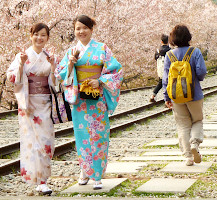
How about exploring the best parts of my favourite city Kyoto with a local guide? The personalized tour by our partner GetYourGuide can take between 2 - 8 hours. For more details check out this page >
History
In 1262 Shinran (1173 - 1262), known as Kenshin Daishi and founder of the Jodo Shinshu sect, died at the age of 90. After he died in 1272 the Otani Mausoleum was built by his youngest daughter Kakushin-ni. The mausoleum was moved many times to different locations and finally in 1670 it found its place at the current spot within the Higashi Honganji Temple grounds. The temple itself was established by Shogun Tokugawa Ieyasu (1543 - 1616) in the year 1602. Since 1658 the temple has been located at the present location. Over time Higashi Hongan-ji´s influence became very powerful. Shogun Tokugawa Ieyasu was very worried about this development and decided to separate the temple into an eastern (Higashi) and western (Nishi) part. The temple halls were destroyed by fire 4times (1788, 1823, 1858, 1864) during the Edo period (1603 - 1868). The current buildings date back to 1895.
Location

Higashi Honganji is located northeast of Kyoto Station.
Address: Karasuma Shichi-jo Agaru, Shimogyo-ku, 600-8505 Kyoto
How to get to Higashi Honganji?
- 8min walk from Kyoto Station to Higashi Honganji Temple
Sightseeing spots at the temple grounds
Top:
Founder's Hall Gate (Goei-do Mon) - The construction of the gate took from 1907 to 1911. The height of the two-story gate is appr. 28 m. On the upper floor, you will find 3 figures: the future Buddha (Bodhisattva Maitreya), the historical Buddha (Shakyamuni), and his principal disciple (Ananda).
The Founder's Hall (Goei-do) - Goei-do is the largest wooden building in Kyoto and one of the largest in the world. (The largest one can be found in Nara. It is the Great Buddha Hall of Todai-ji Temple). It is the most important building within the temple complex. The dimensions are really impressive: length 76 m, width 58 m, height 38 m. The floor has a size of 1532 m2 (approximately 927 tatami-mats). The latest reconstruction took from 1879 to 1895. You will find there an image of the temple's founder Shinran (1173 - 1263). It is mainly used for ceremonies and other religious activities. The huge space gives room for many followers of the sect.
Amida Hall - Inside the hall is the image of Amida Buddha displayed on the main altar. Scrolls describe Prince Shotoku (574 - 622), the father of Japanese Buddhism and the seven patriarchs of the Pure Land tradition can be seen on the other one. Enjoy also the beautiful drawings, made by the famous artists Chikudo Kishi and Gesshu Hata, at the sliding doors (fusuma) during your visit.
Thick Rope - You will see in the corridor connecting Amida Hall with Goei-do a thick rope braided with human hair. After the halls burned down 4times during the Edo period (1603 - 1868) they needed more robust ropes to pull up the large wooden beams during the reconstruction in 1895. Female followers donated their hair the make those ropes stronger.
The Reception Office (Sanpai Settai-sho) - The construction of the building, designed by architect Goichi Takeda (1872 - 1938), was finished in 1934.
Audio-Visual Hall - The hall is located right behind the Reception Office and was constructed in 1998. The Japanese architect Shin Takamatsu (1948 - ) was responsible for its design. The building contains a gallery, butsuma (altar rooms), and a reception room.
Festival & Events in Kyoto (dates can change without notice)
April
Miyako Odori (1st - 31th)
The traditional annual spring dance of the Kyoto district Gion Kobu performed by Geiko and Maiko is a must-see on your Kyoto visit. Don't miss the most popular dances the Miyako Odori "Cherry Blossom Dances" or "Dances of the Old Capital" at the Gion Kobu Kaburenjo Theater (located close to Gion Corner).
May
Aoi Matsuri (15th)
The highlight of this festival is a large parade from the Imperial Palace through the Shimogamo Shrine to the Kamo Shrines. More than 500 people wearing aristocratic costumes from the Heian Period (794 - 1185). The Aoi Matsuri belongs with the Gion Matsuri and Jidai Matsuri as the three most famous festivals in Kyoto.
July
Gion Matsuri (whole month)
The month of July is full of different events like the Yoiyama - Kyoto's Magical Night (locals in kimonos look at the giant Gion floats the day before the parade) or the famous Yamaboko Junko (float procession on the 17th of July).
Obon Festival at Higashi Honganji Temple (30th - 31st)
The annual summer Obon Festival honors the spirit of our ancestors. You can enjoy there tea ceremony demonstrations, games, flower market, delicious food, Bon Odori Dancing and much more.
October
Jidai Matsuri ("Festival of Ages") (22nd)
People celebrate with a large parade between Imperial Palace to Heian Shrine the anniversary of the foundation of Kyoto. App. 2000 participants wearing historical costumes from different time periods. Enjoy this great festival which lasts around 2 hours. Illumination event at Kodai-ji (end of October - beginning of December)
Where to stay in Kyoto?
Day trips from Kyoto:
My 100 Best Moments in Japan
I have visited Japan nearly every year since 2004. This is my collection of the 100 best moments in my favorite country. Enjoy the pictures and I hope you will start your own journey soon.
Find out more >
Books about Japan
Reading books is a great source of inspiration for me. Check out my recommended list of books about the fascinating country Japan.
My Book recommendations >

